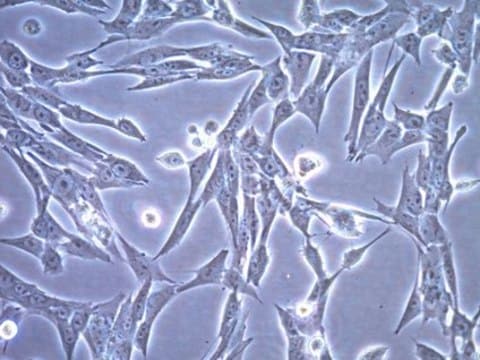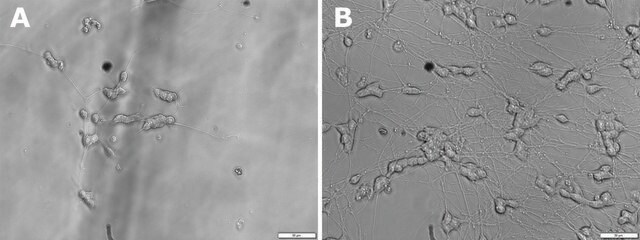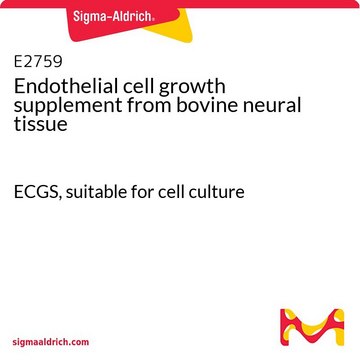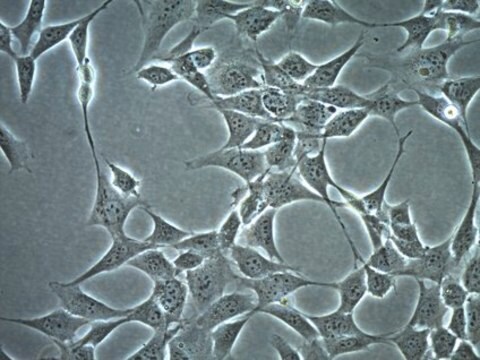SCC195
CT-2A-Luc Mouse Glioma Cell Line
Mouse
Synonym(s):
CT-2A Luciferase, CT2A Luciferase, mouse astrocytoma cell line
About This Item
Recommended Products
Product Name
CT-2A-Luc Mouse Glioma Cell Line, CT-2A-Luc mouse glioma cell line is a valuable mouse model for therapeutic research on brain malignancies.
biological source
mouse
technique(s)
cell culture | mammalian: suitable
shipped in
ambient
General description
References:
1. Weller M, Cloughesy T, Perry JR, and Wick W (2013) Neuro Oncol 15(1): 4-27.
2. Seyfried TN, Mukherjee P (2010) J Oncol 2010:961243 doi.10.1155/2010/961243.
3. Cotterchio M, Seyfried TN (1994) J Lipid Res 35(1): 10-14.
4. Binello E, Qadeer ZA, Kothari HP, Emdad L, Germano IM (2012) J Cancer 3: 166-174.
5. Martinez-Murillo R, Martinez A (2007) Histol Histopathol 22(12): 1309-1326.
6. Zimmerman HM and Arnold H. (1941) Cancer Res 1(12): 919-938.
7. Huysentruyt LC, Mukherjee P, Banerjee D, Shelton LM, Seyfried TN (2008) Int J Cancer 123(1): 73-84.
Source:
The parental CT-2A cell line was generated from a malignant astrocytoma formed via implantation of the carcinogen 20-methylcholanthrene in the cerebrum of a C57BL/6J mouse (6). The tumor was maintained through serial intracranial transplants prior to cell line isolation. The CT-2A-Luc luciferase cell line was clonally derived from CT-2A cells transduced with a lentiviral vector harboring a firefly luciferase (Fluc)-IRES-GFP cassette under control of the CMV promoter; cells were subsequently sorted for EGFP expression (7).
Cell Line Description
Application
Cancer
Oncology
Quality
• Cells are tested negative for infectious diseases by a Mouse Essential CLEAR panel by Charles River Animal Diagnostic Services.
• Cells are verified to be of mouse origin and negative for inter-species contamination from rat, chinese hamster, Golden Syrian hamster, human and non-human primate (NHP) as assessed by a Contamination CLEAR panel by Charles River Animal Diagnostic Services.
• Cells are negative for mycoplasma contamination
Storage and Stability
Storage Class Code
12 - Non Combustible Liquids
WGK
WGK 2
Flash Point(F)
does not flash
Flash Point(C)
does not flash
Certificates of Analysis (COA)
Search for Certificates of Analysis (COA) by entering the products Lot/Batch Number. Lot and Batch Numbers can be found on a product’s label following the words ‘Lot’ or ‘Batch’.
Already Own This Product?
Find documentation for the products that you have recently purchased in the Document Library.
Our team of scientists has experience in all areas of research including Life Science, Material Science, Chemical Synthesis, Chromatography, Analytical and many others.
Contact Technical Service





